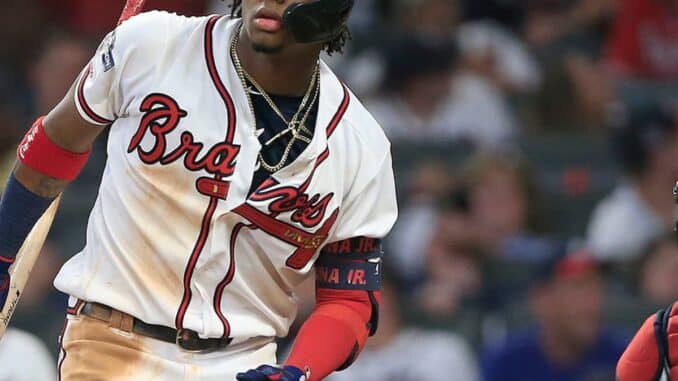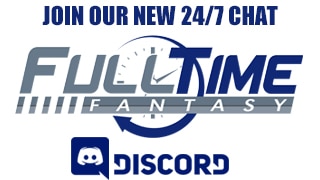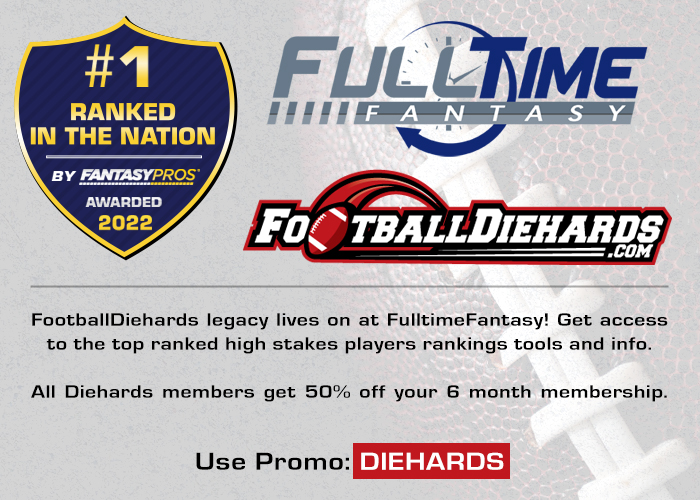
Rotisserie, draft, AL, and NL-only…there are countless formats to enjoy fantasy baseball. Auction leagues are growing in popularity and have strategic and fun advantages other formats don’t provide. Our 2023 Fantasy Baseball Auction Overview is a great start for building a championship roster via your auction.
Before entering the 2023 fantasy baseball auction overview, please familiarize yourself with my 2023 fade list. Also, my 2023 bounce-back players , deep sleepers, breakout hitter of the year, and extensive preview of all 30 squads are invaluable resources. Finally, our 2023 MLB breakout pitchers list digs deep to give you an edge on draft day.
Auction Overview
The fantasy baseball market has many formats and league sizes, especially in auctions. I’ve played in American and National League formats with 12 teams plus 15-team mixed leagues. Each setup could also have keepers (players held for more than one year) or trading, which changes all players’ value during the auction. Over the last 20 seasons, I’ve played in the high-stakes fantasy market where there is no trading, which puts pressure on a fantasy manager to develop a winning plan before the auction.
When doing an auction league with no trading, a fantasy manager has a small margin for error. No other team will be knocking on your door looking to take your third closer off your hands via a trade. If your roster is out of balance (strong in some categories and weak in others), you can’t trade hitting for pitching or even speed for saves. An auction can be won in many different ways, but many managers can lose the battle during the auction due to a questionable game plan or even a lack of foresight. Every year the player pool will change slightly. The goal of a manager is to evaluate the inventory and develop a strategy that can be executed at the draft table. If I come away with enough pieces to the puzzle, I can manage my way to a championship.
Whatever game plan I decide to use, I must be ready to adjust if I don’t get my key players. A fantasy manager can roster any player they want in an auction, but it comes with a price.
In most baseball auction leagues, each team starts with $260 to buy 14 hitters and nine pitchers. The goal is to accumulate the most league points in five hitting (batting average, runs, home runs, RBIs, and steals) and five pitching (wins, ERA, WHIP, strikeouts, and saves) categories.
In a 12-team league, a first-place finish in a category would be worth 12 points, second place is 11 points, and so on until reaching 12th place (one point). The winner of each league is determined by adding up all 10 categories.
Calling Out Players to Improve Your Team-Building Chances
A common mistake fantasy managers make is hoping the players they want don’t get called out early. It sounds good in principle, but the problem is that all the other good players are coming off the board while I sit back, holding my money. If I wait and miss on my targeted players, I will have fewer options to build my team.
Getting my key players called out as quickly as possible is essential. For example, if I want a player in the auction and believe he is the key to building my foundation, I would like to call him out on my first opportunity. By doing this, I find out how much he will cost (higher or lower than my predicted price point) or if I need to start looking for someone else to develop my team around. The quicker I know where I stand on critical players, the better my chance of executing my plan or adjusting on the fly.
For example, I wanted to build my team around Ronald Acuna, and I believed he could hit over .300 with 30+ home runs and 30+ stolen bases with a target value of $43. If I miss on him, I will need to find another player with a step down in overall expectations. I should have a secondary plan to shift to another player with a similar skill set with less upside, but I would then save some of my spending budget.
My next tier for power and speed could be Julio Rodriguez in this example. If Acuna gets called out early and sells for more than I’m willing to pay, Rodriguez would be attainable if his salary falls within my expected budget and his targeted salary.
Suppose Rodriguez gets called out first, and someone buys him for $41 while I sit on Acuna as my first key player. In that case, I will have a further drop-off in the player pool if Acuna is purchased by another manager above my budgeted salary target. The situation worsens if many top players get called up before Acuna, forcing me to shove all in, no matter the cost, or revamp the foundation of my team build on the fly. This freelancing style could lead to an imbalance in roster construction in a non-trading format where a trade can’t fix a shortfall in a category.
In this example, a detour off of Acuna may push me to Juan Soto, bringing less upside in speed but a potentially high ceiling in batting average. This decision would force me to find stolen bases differently while ensuring not to give away his power edge.
If the drop-off from Acuna led me to Trea Turner, I would set my foundation in steals with 25-home run power and strength in batting average. However, my second targeted player should bring more home runs with a chance at hitting for average with a 100/100 type skill set.
Again, if Soto, Turner, and Rodriguez get called out in the auction before Acuna, I would need to get more creative with less inventory to build my offense.
The other option is not missing your targeted core player or players by overpaying with the theory of making up the lost dollars later in the auction.
Game Plan and Early Spending
It is crucial to focus on my game plan early during the auction while not worrying about how the other teams spend their money. I aim to build my foundation in hitting and pitching while keeping my foot on the gas if the players I like are called out early. I’m willing to spend $200 of my $260 on my key players.
This strategy requires me to shut down my spending in the middle of the auction for a long time.
Many fantasy managers get aggravated when one or more teams hold onto their money. They are concerned that those managers will overbid them on a key player they want later in the auction. If I invested $185 on 10 players and the other team spent $40 on two players, that team is eight players behind me. He will think he has all the power in the world with the big stack, but the truth is that someone will constantly be bidding against him. Each of the other managers will need players also. He will be competing with at least one manager most of the time for each player when he tries to fill his roster, forcing him to pay close to full price or a premium on some players, even in the middle part of an auction.
Keep an Open Mind Early
When sitting at the draft table to do an auction, the best opportunity for players could be the first couple of players called out. Understanding each player’s possible value is essential while being ready to fire as soon as the auction starts. If I sit back and wait, I might miss a discounted player or a possible stud. I know a $33 player might not sound like a discount, but that same player might go for $38 if he was called out a couple of rounds later in the auction.
In my early example between Ronald Acuna and Julio Rodriguez, Rodriguez can’t be dismissed if he’s called out first and his salary falls below his expected price point. If the bidding is fading on Rodriguez at $35, it may be wise to buy the built-in value for $36 with the understanding that there could be a fight at the top end for Acuna. On the other hand, if I pass on Rodriguez, Acuna may go for more than I expected.
Targeting the Last Top Player on the Board
Another common mistake is waiting for the best player left on the board. I see this happen a lot late in auctions. No one wants to call out a player because they want him as cheap as possible. Four or five managers sit back, waiting for the right time to add this player to their team. When he’s called, most of their hearts are broken. This player usually costs the winning manager a few more dollars than expected.
I use this to my advantage at certain positions during the auction. For example, if I like two or three players about the same, say at second base, I will try to buy the first of these options called out. By doing this, I avoid overpaying for the best “available player” left later in the auction. Many times this happens to the last speed option or even a closer.
End Game
As I mentioned early, when the auction starts, I don’t care what money any other team has left until I get down to about $60. Each manager needs to spend at least $200 on the nucleus of their team. The other teams will catch up to me when they start filling roster spots.
When I get down to $60, I put the brakes on my spending and look for bargain players. Being disciplined increases my chances of getting the players I want late. If I shut down my spending when I get to $35-$40, I will have the leverage in the end game. I will need almost every manager to have less than $20 to hold an edge over them late in the auction.
To execute this type of aggressive style, a fantasy manager must have the vision to see the outs at each position while having a game plan to build the back end of their roster.
Final Note
Winning an auction league comes with a healthy game plan followed by execution during the auction while also needing the targeted players to deliver their expected stats. Every manager in the auction will know the players and develop similar evaluations. When I try to implement my plan, there will be battles for critical players. I will win some and lose some. I hope to win the right ones. I would rather lose with a team I like than lose with players I didn’t want.
Remember, the more thought invested in a game plan with variations will help a fantasy manager make better decisions in the split seconds when bidding on players.
To read all the MLB TeamOutlooks detailed and analyzed by a high-stakes fantasy baseball legend, become a member today!
You can either buy all the Outlooks as a downloadable for a one-time discounted price of $30 or Join the FullTime fam with a Monthly, 6-Month, or Annual Membership which includes everything we do for ALL SPORTS!
This week only, use PROMO: SHAWN23, for an additional 15% off any package!
GET THE UPDATES!
Turn on your email notifications for Breaking Fantasy news alerts & site updates.



